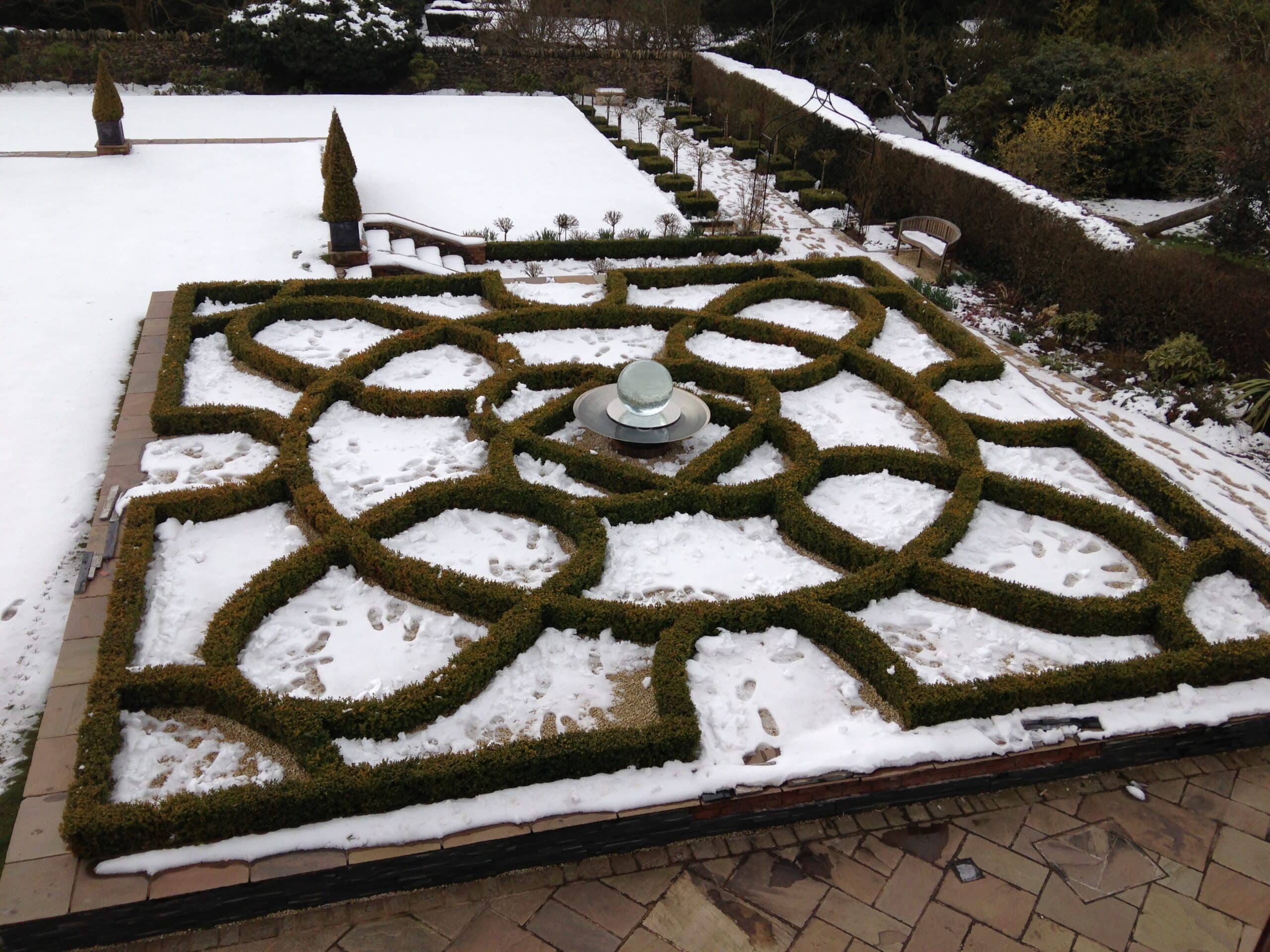At Readyhedge, we provide hedging of all shapes and sizes, catering to every type of outdoor space. We know that sometimes all that is needed is a small divider in a garden and this is where the low hedges come in.
Low hedging tends to be evergreen, meaning they can add structure to the garden even in the depths of winter. Best known as knot gardens or Parterres in the grand country houses of the rich and famous, where they are planted in between colourful bedding plants, they are just as useful in a small garden to edge a path or patio to give the garden structure.

In our previous blog post, we discussed all things low hedging including how to incorporate them into your garden, maintenance tips and how to ensure sustainability. Below we look at our top 5 low hedge picks for your garden.
Low Hedge 1: Buxus sempervirens (Common Box)
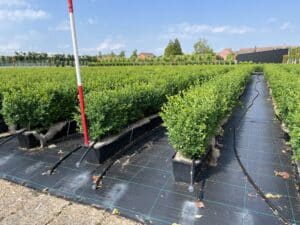
This is the classic low hedge that has been grown for hundreds of years. It is a very slow growing hedge and with two trims a year it can be kept looking amazing. With small evergreen leaves it forms a dense hedge that can be kept at 40cm in height with great ease. It grows 2 – 5 cm a year and over time can grow up to over 180cm in height, although this would take a while.
Currently suffering from bad press because of a box moth caterpillar and the potential effects of blight. The Buxus sempervirens are still a brilliant hedge and with care and treatment both of these problems can be, and are, kept at bay allowing this plant to thrive as an amazing low hedge option.
Low Hedge 2: Taxus baccata (English Yew)
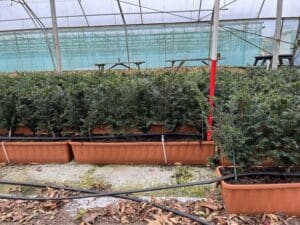
A surprising one as normally seen as a large hedge in a formal garden or even a maze. With regular trimming the English Yew can be kept down to around 40 – 50cm in height. With its dark green foliage it makes a great edge to an outdoor space and also makes for a stunning backdrop for other plants. Good for a Knot garden, it is worth considering as a low hedge as it is easy to get topiary shapes like balls, cones and Pyramids to match up with it. If it does get too big it is possible to cut Taxus down and it will regenerate to form a nice low hedge again.
Low Hedge 3: Euonymus Jean Hugues
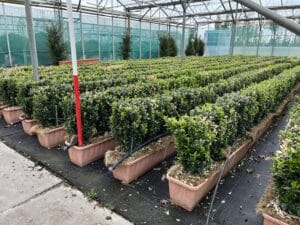
A relatively new hedge form, this plant is making a big inroad into the low, formal hedge market. Evergreen with small green leaves, they are thinner and not as rounded as Box leaves are but still look just as great. At Readyhedge we have been growing this hedge for 5 to 6 years and it can grow up to 80cm tall quite quickly although it is also easy to keep it cut down to around 40-50cm. We would not advise planting this in a really exposed site but we are finding that in more sheltered spots it is a brilliant performing low hedge.
Low Hedge 4: Ilex crenata (Japanese Holly)
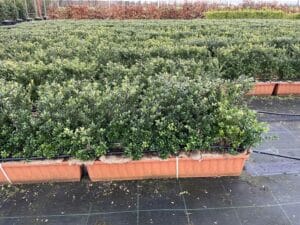
Looking nothing like the holly that you normally see, with small oval leaves and no spines, this is an interesting and slightly different hedge type. As it gets older it gets denser meaning at a young age it can look a bit open but as it matures it fills out and eventually forms a really dense screen.
We grow two types, the first is an Ilex crenata Dark Green which is normally around 30-40cm tall with a lovely dark green leaf. The other is Ilex crenata Caroline Upright which grows taller and has a paler more yellow leaf and this makes a superb hedge in the 70-90cm height range. Both of these plants perform best in a loam soil that is also slightly acidic. They are quite a rigid plant and as such it would be best to use them in areas where they are not likely to be knocked into as they can damage very easily.
Low Hedge 5: Pittosporum Golf Ball
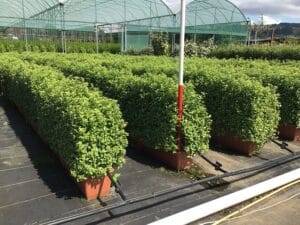
This, as the name suggests, will, if left alone, form a sphere or dome. However, trimmed it makes a lovely low hedge with a pale almost grey green leaf. The Pittosporum Golf Ball tend to be soft looking and not quite as formal as the previous hedges. We would again suggest that these are grown in the milder parts of the country or in sheltered spots as they can show some leaf scorch during the winter.
No matter what look you’re after or the size of your garden, when the right hedge is chosen and planted well, the final outcome can be incredibly effective.

